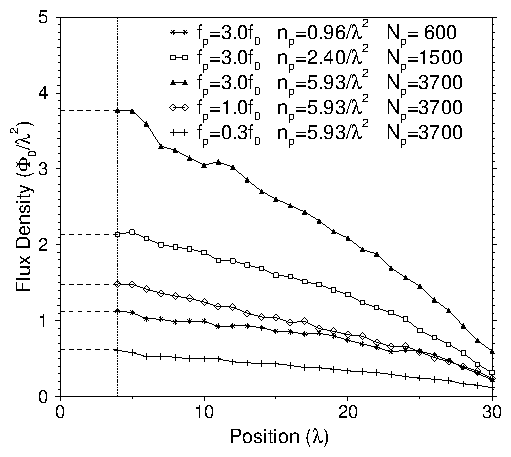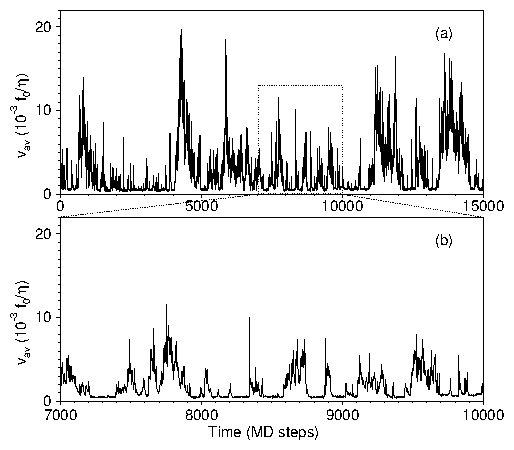 Figure 1: Magnetic flux density profiles B(x) for each sample studied.
The profiles were obtained using
B(x)=(24λ)−1 ∫024λ dy B(x,y).
The area
0 < x < 4 λ, 0 < y < 24λ,
to the left of the dotted line,
is the unpinned region through which vortices enter the
sample. This mimics the external field; the
dashed line indicates the field strength in this region.
The presence of bulk pinning in the sample (located in the region
4λ < x < 30 λ, 0 < y < 24λ)
provides a barrier for flux entry and exit
at the interface x=4λ.
The five profiles correspond to five samples with three different
densities of pinning sites, np,
and three different uniformly distributed pinning strengths, fp.
Starting from the top (very strong pinning) to the bottom, we have
filled triangles: fpmax=3.0 f0,
np=5.93/λ2, Np=3700, Nv ≈ 1700;
open squares: fpmax=3.0 f0,
np=2.40/λ2, Np=1500, Nv ≈ 1000;
open diamonds: fpmax=1.0 f0,
np=5.93/λ2, Np=3700, Nv ≈ 700;
asterisks: fpmax=3.0 f0,
np=0.96/λ2, Np=600, Nv ≈ 500; and
plus signs: fpmax=0.3 f0,
np=5.93/λ2, Np=3700, Nv ≈ 240.
Note that the slope of B(x), i.e., Jc(x), is somewhat larger
towards the right edge of the sample where the flux density is lower and
the effective pinning is larger.
The average slope is not altered by avalanches since the majority
of the vortices in the sample do not move during an avalanche.
Figure 1: Magnetic flux density profiles B(x) for each sample studied.
The profiles were obtained using
B(x)=(24λ)−1 ∫024λ dy B(x,y).
The area
0 < x < 4 λ, 0 < y < 24λ,
to the left of the dotted line,
is the unpinned region through which vortices enter the
sample. This mimics the external field; the
dashed line indicates the field strength in this region.
The presence of bulk pinning in the sample (located in the region
4λ < x < 30 λ, 0 < y < 24λ)
provides a barrier for flux entry and exit
at the interface x=4λ.
The five profiles correspond to five samples with three different
densities of pinning sites, np,
and three different uniformly distributed pinning strengths, fp.
Starting from the top (very strong pinning) to the bottom, we have
filled triangles: fpmax=3.0 f0,
np=5.93/λ2, Np=3700, Nv ≈ 1700;
open squares: fpmax=3.0 f0,
np=2.40/λ2, Np=1500, Nv ≈ 1000;
open diamonds: fpmax=1.0 f0,
np=5.93/λ2, Np=3700, Nv ≈ 700;
asterisks: fpmax=3.0 f0,
np=0.96/λ2, Np=600, Nv ≈ 500; and
plus signs: fpmax=0.3 f0,
np=5.93/λ2, Np=3700, Nv ≈ 240.
Note that the slope of B(x), i.e., Jc(x), is somewhat larger
towards the right edge of the sample where the flux density is lower and
the effective pinning is larger.
The average slope is not altered by avalanches since the majority
of the vortices in the sample do not move during an avalanche.
|

